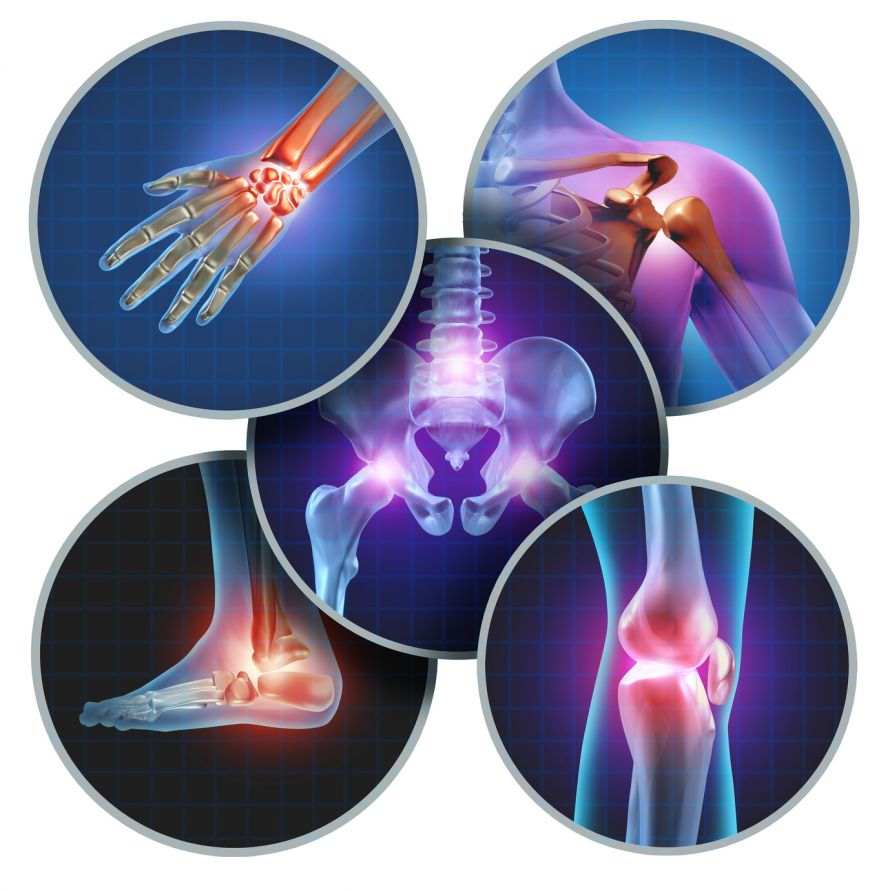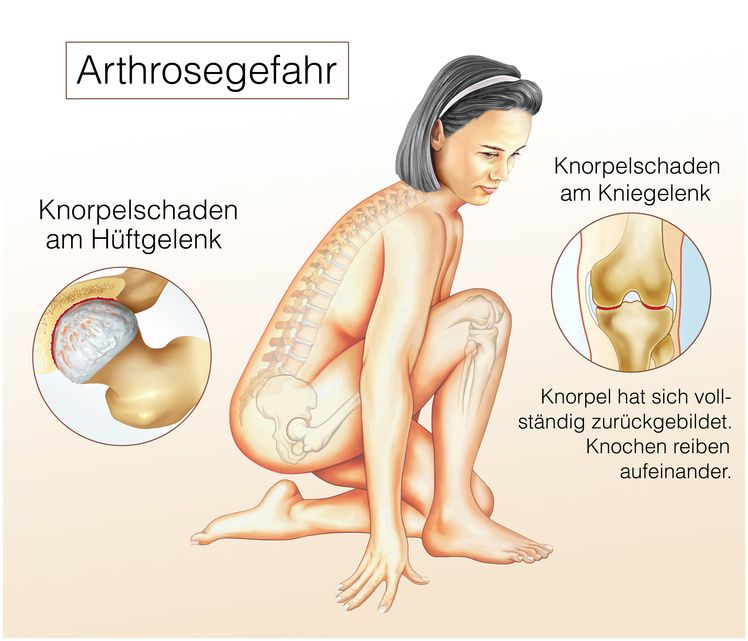In addition to the term arthrosis, the term arthritis is frequently used. Both are joint diseases and have similar symptoms, mostly pain in the joint.
Arthrosis is joint wear and tear caused by worn cartilage and other joint structures.
Arthritis, on the other hand, refers to inflammation of the joint. This inflammation can be caused by
- an infection, triggered for example by bacteria or fungi, or
- due to an autoimmune cause, such as in the case of rheumatism.

© freshidea / Fotolia
Basically, all joints can wear out. Particularly frequently affected, however, are
Years of overloading or incorrect loading of the joint structures can cause arthrosis. The following are possible causes of arthrosis:
This is why arthrosis occurs in most cases in older people. Younger people are rarely affected.
The video shows the development of arthrosis of the hip joint:
Heavy or unnatural loading of the joint leads to a breakdown of the cartilage layer. In addition, the bone structure underneath the damaged cartilage changes. Over the years, the cartilage becomes more and more worn. As a result, the joint space becomes smaller, so that the cartilage increasingly loses its function as a protective layer for the bone.
As a result, in the late stages of arthrosis, the bones involved in the joint come into direct contact. So the bones rub directly against each other. At the same time, the joint widens through the formation of bone spurs (so-called osteophytes).

Arthrosis can develop in all joints. However, the hip and knee are often affected © Henrie | AdobeStock
At the beginning of the disease, the patient often has no complaints. It is only over time that the pain in the joints typical of arthrosis develops. At first, it only occurs under loading, then also during movement and finally also in the resting position (so-called pain at rest).
Pain may occur at the beginning of a movement. It then disappears again after a few moments (metres) (so-called pain on initial movement). Pain can also increase in intensity with age.
In some patients, the mobility of the joints is limited. Often there is morning stiffness, the joints then hurt especially in the morning after getting up. However, the pain usually does not last longer than 30 minutes.
The abrasion of cartilage causes irritation of the joint. Fluid is deposited and the affected joints swell up. The symptoms may worsen in cold or wet weather.
With gonarthrosis (arthrosis of the knee joint) in addition to the pain, there is also limited mobility. It in turn contributes to the breakdown of the muscles. Patients with hip joint arthrosis typically show the unloading limp. The affected joint is loaded for a shorter time than the healthy joint. There is also outward rotation of the damaged hip joint.
Based on the symptoms of the disease and the medical history, the doctor will consider arthrosis at a relatively early stage. On an X-ray image the typical arthritic changes can usually be reliably recognised. This includes
- the joint space reduction,
- altered joint surfaces and bone structure,
- osteophytes and
- possibly a deformation of the joint.
Under certain circumstances, further imaging procedures (sonography, scintigraphy, MRT) are performed. This makes it easier to assess complications and the extent of damage.
Arthrosis is currently not curable. Therefore, the treatment aims to restore the mobility of the joint and relieve the pain.
In addition to conservative and medicinal methods, surgical procedures are also available for this purpose. Arthrosis treatment with medication consists of the administration of pain-relieving and anti-inflammatory agents. In addition, substances can be injected directly into the joint to make it more mobile.
To relieve the painful joints, overweight people should first reduce their weight.
As part of conservative arthrosis treatment, non-weight-bearing exercise helps to slow down the progression of the disease. Other components of conservative arthrosis treatment are
- Physiotherapy,
- Relieving aids,
- Movement training,
- Physical therapy (e.g. electrotherapy, massages, heat or cold treatments) and
- Occupational therapy.
When joint wear is far advanced, conservative and medicinal arthrosis treatments are often no longer sufficient. Surgical treatment for arthrosis may then become necessary.
With the help of arthroscopic interventions irritating cartilage and tissue remnants can be removed and cartilage can be smoothed. For some time now, attempts have also been made, via cartilage transplants to rebuild the cartilage.
If the joint cannot be saved, an artificial joint replacement (endoprosthesis) is necessary. It leads to freedom from pain and restoration of mobility, especially in older patients.



































